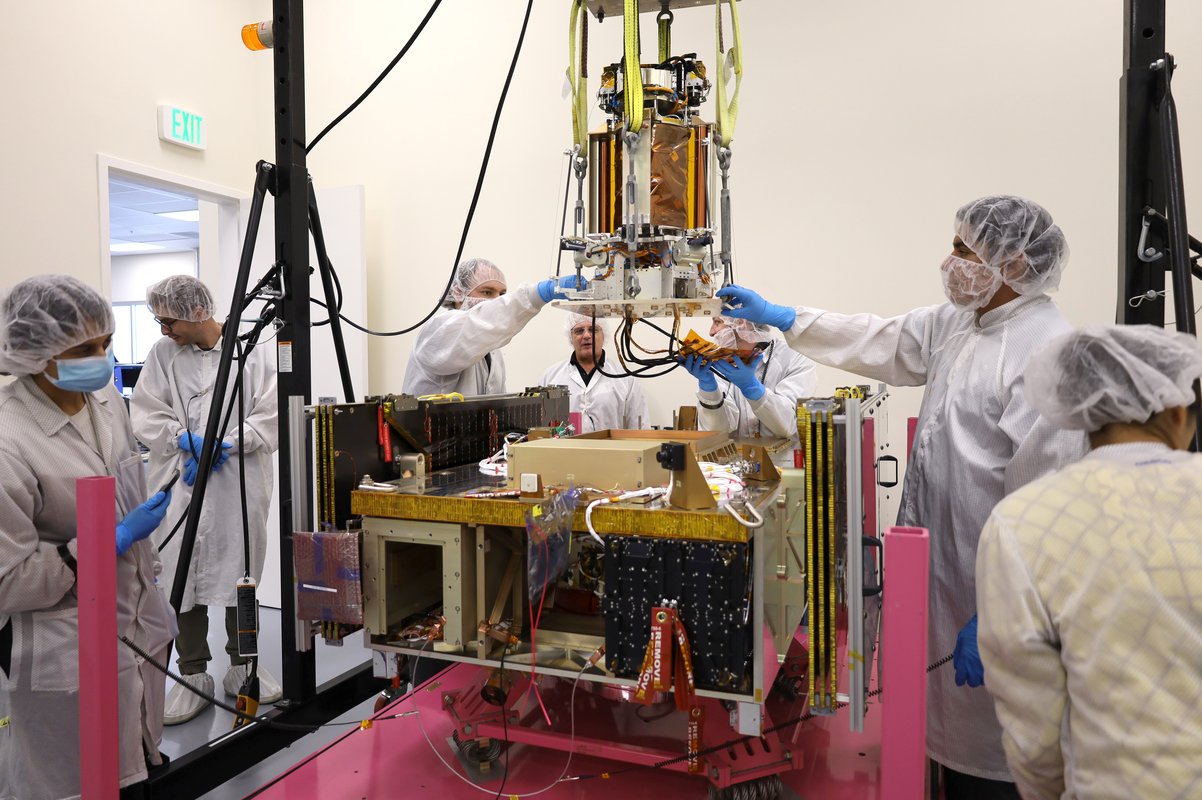This article is an installment of Future Explored, a weekly guide to world-changing technology. You can get stories like this one straight to your inbox every Thursday morning by subscribing here.
A new NASA report found that space-based solar power — a futuristic concept pulled from the pages of science fiction — is likely too expensive to work, but it also lays out exactly what would need to change to make it a viable source of clean energy in the future.
The challenge: Solar power is a revolutionary weapon in the battle against climate change. Every hour, enough solar energy hits Earth to power the entire world for a year, and the cost of harnessing this energy with solar panels has fallen exponentially in recent years.
The problem is that solar energy isn’t consistent or evenly distributed. Solar panels can’t generate electricity at night, of course, but sunlight also varies greatly across the seasons of the year. Researchers are still trying to figure out the most cost-effective way to store excess solar power for later use. Batteries are still expensive and can only store a few hours or days of energy at a time.
Some places can’t rely on solar power because they simply don’t receive enough sunlight year-round, and it’s surprisingly hard to build long-distance transmission lines to move electricity from sunnier places.
At a high enough orbit, space-based solar power stations would never experience “night.”
Space-based solar power: Instead of collecting the sun’s energy on the ground, it may be possible to harvest it in space using satellites. We could then send this solar energy to terrestrial receivers in the form of concentrated microwaves or laser beams for conversion into electricity.
Solar energy is 10 times more intense, on average, above Earth’s atmosphere than within it, so these satellites would be exposed to far more sunlight than terrestrial solar farms, and at a high enough orbit, they’d never experience “night,” either, eliminating solar’s intermittency problem.
Weather wouldn’t be an issue, as microwaves can travel right through clouds, and space-based solar power stations in high enough orbits could beam solar energy to essentially any location on the planet 24/7.

Scientists have been contemplating the idea of space-based solar power for decades, and in 2015, JAXA scientists proved that it is possible to wirelessly and accurately transmit energy as microwaves across a significant distance and then convert it into electricity.
Even though the distance was only 170 feet and the experiment took place on Earth, this was a win for proponents of space-based solar power.
An even bigger win followed in March 2023, when Caltech scientists’ Space Solar Power Demonstrator (SSPD-1) became the first spacecraft to wirelessly transmit solar energy harvested in space to Earth.
What’s new? The Caltech team has now wrapped up the SSPD-1 experiment, which, in addition to wirelessly transmitting energy from space, also compared the performance of 32 types of solar cells and demonstrated a potential design for a solar energy-collecting spacecraft.
Based on this research, the team has concluded that space-based solar power could technically work, but just isn’t economical — yet. They took an optimistic read of the evidence.
“Solar power beamed from space at commercial rates, lighting the globe, is still a future prospect,” said Caltech President Thomas F. Rosenbaum. “But this critical mission demonstrated that it should be an achievable future.”
“We found that these systems are 12 to 80 times more expensive.”
Erica Rodgers
A NASA report released on January 11 is far less optimistic.
NASA analyzed the expected lifecycle cost of two existing space-based solar power concepts if they were further developed on Earth in the 2030s, assembled in space in the 2040s, and operational from 2050-2080.
Based on these calculations, NASA determined that neither concept would be able to compete with terrestrial clean energy options.
“We compared it to wind, solar, [and] fission — all on the ground — and we found that these systems are 12 to 80 times more expensive,” said Erica Rodgers, who leads the science and technology partnership forum in NASA’s Office of the Chief Technologist.
The backlash: While proponents of space-based solar power have expressed gratitude that NASA chose to create this report, they’ve also questioned the numbers the agency used for its predictions.
“It seems to be driven entirely by a wide variety of assumptions that are, in combination, the worst possible of the worst possible cases from years ago,” John Mankins, who led a NASA study of space-based solar power in the late 1990s, told Space News.
“[NASA’s report] stopped short of a thorough examination of the real costs and promise of space-based solar power technology.”
Sean Mahoney
For example, the report assumes a launch cost of $1,000 per kilogram using SpaceX’s in-development Starship rocket, but SpaceX hopes to achieve a cost of $200/kilogram, and ESA uses a range of $300-$500/kilogram in its own estimates for future space-based solar power systems.
NASA’s report is also based on the use of Starship rockets to carry the hardware all the way up to geostationary orbit, which will require refueling in space. A slower but far cheaper option would be to use Starship to get the tech to low-Earth orbit and then have solar-powered space tugs pull it the rest of the way.
“While NASA’s report was generally encouraging, it stopped short of a thorough examination of the real costs and promise of space-based solar power technology,” said Sean Mahoney, executive director of the Space Frontier Foundation.
Looking ahead: In the report, NASA does lay out a roadmap for space-based solar power to become cost-competitive with terrestrial sources of clean energy.
In addition to $500/kg launch costs and the use of space tugs to pull hardware from low-Earth orbit to geostationary orbit, we’d also need to extend the assumed lifetime of the hardware from the current 10 years to 15 years, find cheaper ways to service and dispose of the tech, and efficiently manufacture the hardware at scale.
Those advances won’t happen overnight, but they also aren’t impossible to imagine, and while NASA doesn’t have any concrete plans to test space-based solar power, seemingly every other major space agency has something on the books.
“This is a paradigm-shifting capability that could open up entirely new industries we cannot even dream up yet.”
Kate Stambaugh
In 2022, ESA began the SOLARIS initiative to assess the concept’s feasibility and mature the tech needed to make it commercially viable — its goal is to launch a demonstrator satellite in 2030, followed by a pilot solar power plant in 2035 and a commercial-scale plant in 2040.
Also in 2022, China announced plans to use its Tiangong space station to test space-based solar power tech — its goal is to transmit energy to Earth in 2028. JAXA, meanwhile, recently announced its intention to beam solar energy from space to Earth in 2025.
The US Air Force Research Laboratory (AFRL) is also taking a close look at space-based solar power, awarding Northrop Grumman a $100 million contract to demonstrate the tech in 2025. Its hope is to use it to power remote, off-grid military bases, but the research could help advance the sci-fi energy source for civilians, too, so whether or not it becomes a major, industrial-scale source of power, space-based solar could still find a niche.
“The benefits of this technology are varied and far-reaching: disaster relief, powering remote sensors, reducing energy supply chain burdens, delivering solar power in bad weather or during the night, you name it,” said Kate Stambaugh, the project’s integration and test lead.
“This is a paradigm-shifting capability that could open up entirely new industries we cannot even dream up yet,” she continued.
We’d love to hear from you! If you have a comment about this article or if you have a tip for a future Freethink story, please email us at [email protected].





